Almost 30% of business transactions take place online. That’s why 71% of businesses have a website.
Are you one of them?
If you’re on your way to joining the club, maybe you’re looking for some tips to point you in the right direction.
Well, it all starts with building a strong online presence with a professional, user-friendly website.
Let’s go over some practical steps and best practices for creating a website that puts your new business on the map and makes potential customers want to engage with your brand.
What’s a High-Quality Website?
When creating a website for your new business, there are several practical steps and tips to ensure your digital storefront is both engaging and effective.
One aspect to consider is the use of clear call-to-action (CTA) buttons, which guide your visitors toward the actions you want them to take.
Take SoFi as an example. The personal finance company excels in creating a user-friendly experience with prominent CTA buttons like “View Your Rate” that stand out visually and invite interaction without overwhelming the user.
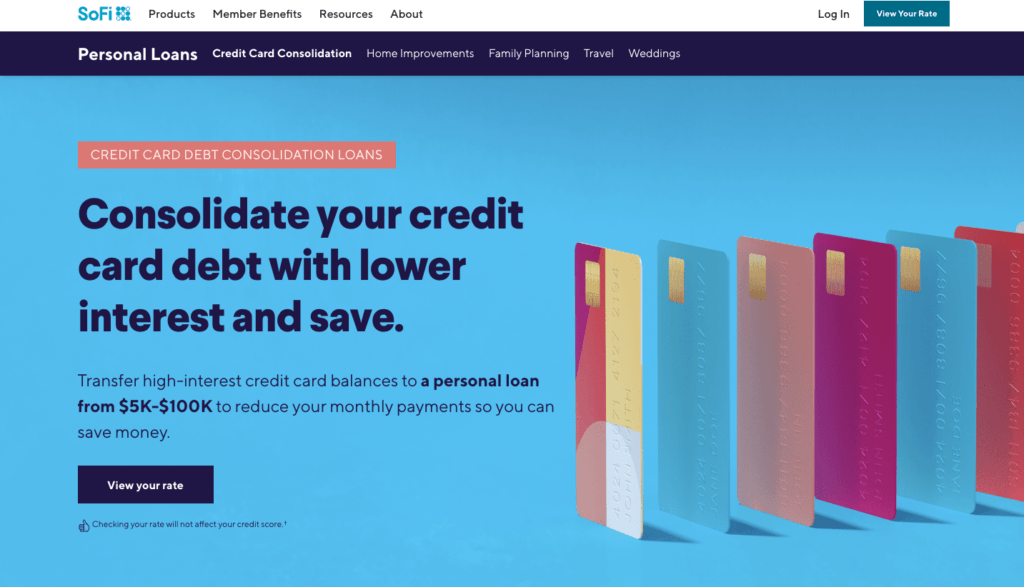
SoFi strategically places these CTAs next to concise, benefit-driven content, making it easy for visitors to take the next step.
Additionally, the use of vibrant colors and simple, direct language makes complex financial products approachable. The web pages aren’t cluttered. SoFi uses whitespace effectively, allowing each section, like its credit card consolidation options, to stand out and draw attention.
Incorporating these elements – clear CTAs, a clean layout, and straightforward language — can significantly enhance the usability and appeal of your business website, encouraging visitors to engage with your content and services.
7 Steps to Creating a Beautiful, Professional-Looking Website
As you build a website for your brand-new business, think of these steps as the bricks-and-mortar of your digital storefront.
1. Choose a Hosting Provider and Content Management System (CMS)
Assuming you’ve already defined your goals and target audience, it’s now time to put those ideas into practice so that they eventually end up on beautiful pages that communicate your offerings and value proposition.
You’ll first need a hosting provider. This is the server where your website will reside. Think of it as your site’s foundation. BlueHost, GoDaddy, A2Hosting, and HostGator are some examples of website hosts that help you get your site up and running.
As you decide on a website host, consider factors like price, storage, bandwidth, uptime, scalability, and customer support.
You also need a content management system (CMS), which is like the architect of your digital space. Using a CMS, you’ll be able to design and shape your site’s structure, layout, and content with ease.
WordPress is the most popular CMS. Its intuitive dashboard allows you to add new pages, posts, and media and customise website settings without coding knowledge.
However, it does come with a learning curve for beginners. So, if you want a more hands-off approach to site design, you might consider a website builder like Squarespace, Wix, or Weebly.
These website builders offer pre-designed templates and drag-and-drop functionality that allow you to create a website in minutes.
Just keep in mind that this means less flexibility and customisation options. So, unlike with a CMS like WordPress, you won’t have as much control over your site design and functionality through themes, plugins, and coding customisation.
Plus, it may be more difficult to sale with a website builder as your business grows. Larger websites often need more complex features and customisation options that many website builders struggle to accommodate.
2. Create a Domain Name
After you’ve decided on hosting and a CMS, come up with a memorable domain name that reflects your business.
To choose the perfect domain name:
- Keep it specific, relevant, and on-brand by using your business name or the niche you’re targeting.
- Don’t use hyphens, numbers, or extra letters.
- Use a .com extension if it’s available.
- Keep it short and simple.
- Add keywords.
3. Decide on Your Color Scheme and Design Elements
Your site’s aesthetic appeal plays a big role in how your potential customers perceive your business.
So, choose design elements that not only catch the eye but represent your brand. Create a color scheme that aligns with your branding (i.e., logo, font, color palette).
If you’re using WordPress, they offer a wide range of customisable themes and plugins to achieve your desired look.
Or maybe you’re okay with a simple layout and fewer customisation options. In that case, a website builder can create an attractive design.
Neither option works for you? You might choose to hire a website designer to bring your vision to life.
4. Create High-Quality Pages and Blog Posts
With design out of the way, you can now start creating content that resonates with your target audience.
When designing your homepage, make sure it has:
- A visually striking hero section with a concise headline and compelling CTA
- Featured content showcasing your key products, services, or blog
- Social proof featuring testimonials, client logos, or user reviews
- A well-organised navigation menu with clear categories
Your landing pages should also include some of those elements. However, they need to go deeper than the homepage and provide more information about your product or service. They should highlight the key benefits and features of your product.
If you’re an e-commerce business, you’ll need to create product pages that include product descriptions, high-quality product images, customer reviews and ratings, and trust signals and security (i.e., secure payment icons, SSL certificates, trust badges).
See how KitchenAid showcases its popular Artisan stand mixer? It uses clear, concise bullet points to highlight key features.
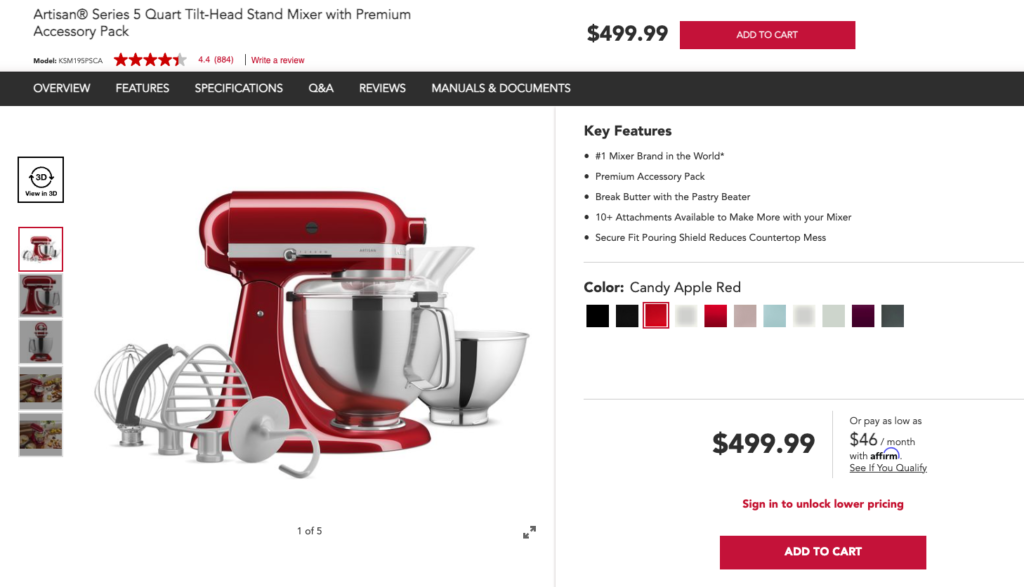
When you scroll to Overview, you’ll see how Kitchen Aid outlines how users will benefit from using the product, whether it’s to quickly whip up chocolate chip cookie dough or easily shred chicken for Taco Tuesdays.
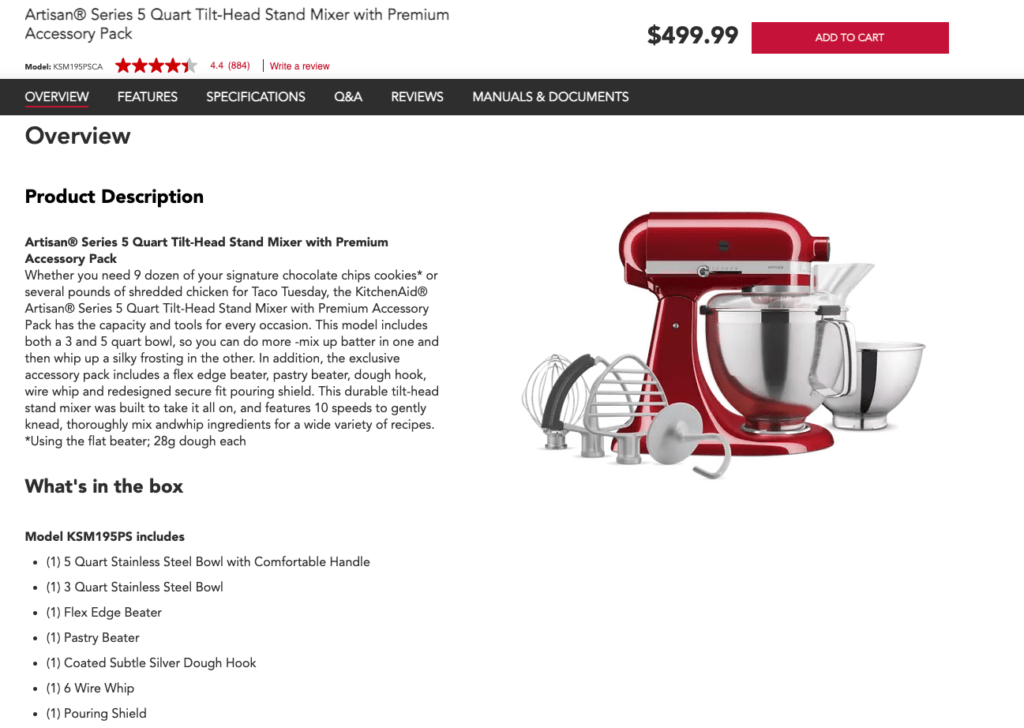
Looking to establish authority in your industry and build even more trust with customers? Consider creating a blog where you share relevant insights, news, updates, and helpful tips with your target audience.
Kitchen Aid’s “A Pinch of Help” blog does just that — offering kitchen tips and product help to customers.
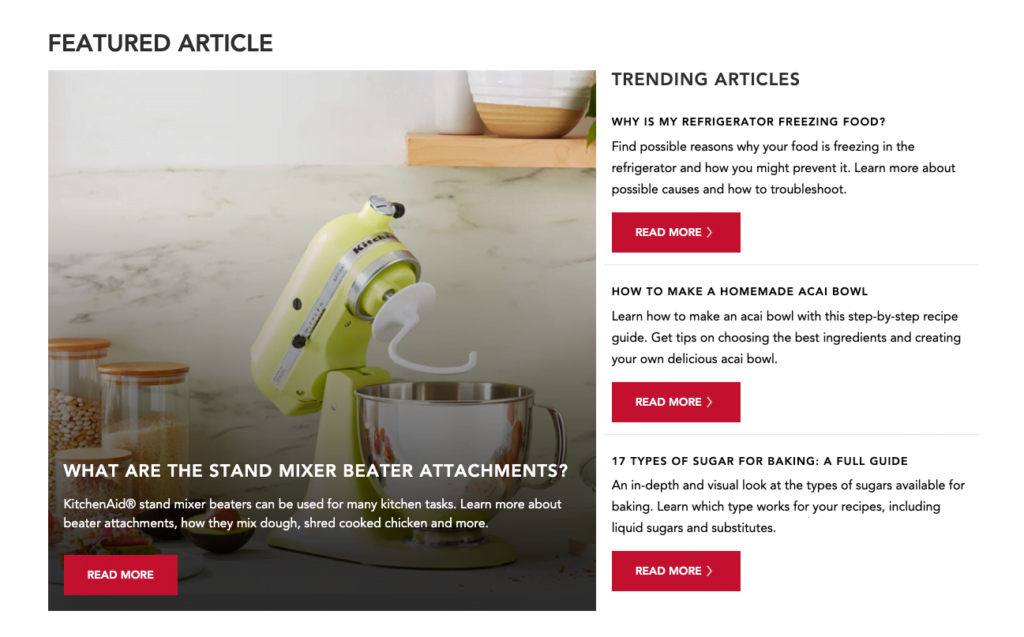
5. Optimise for SEO
The whole point of creating a website is to attract people to it. One way to do this is with search engine optimisation (SEO).
By optimising your website for SEO, you increase the chance of your site showing up in search results for certain keywords.
So, your site’s pages and posts should include relevant keywords that your target audience uses to conduct online searches.
For example, let’s say a potential customer goes on Google and types, “digital printing company in Kansas City.”
Raven Printing LLC has the top spot, ranking #1 in organic search for that keyword. The page’s meta description includes the exact keyword the customer used.
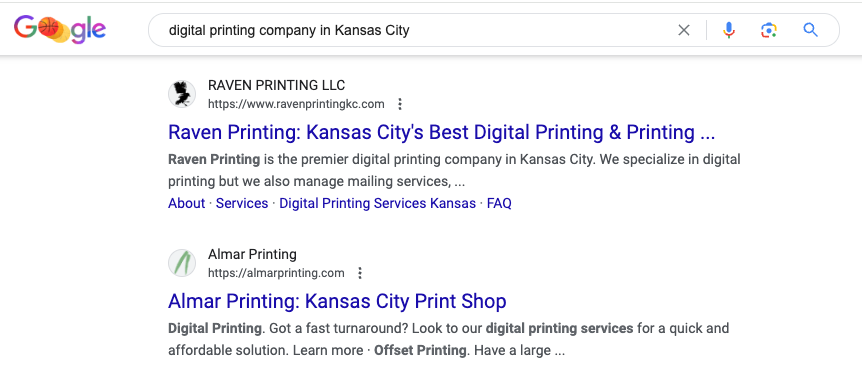
This is the page that pops up when the customer clicks the link. You can see the keyword in the headline: Kansa City’s Premier Choice for Digital Printing.
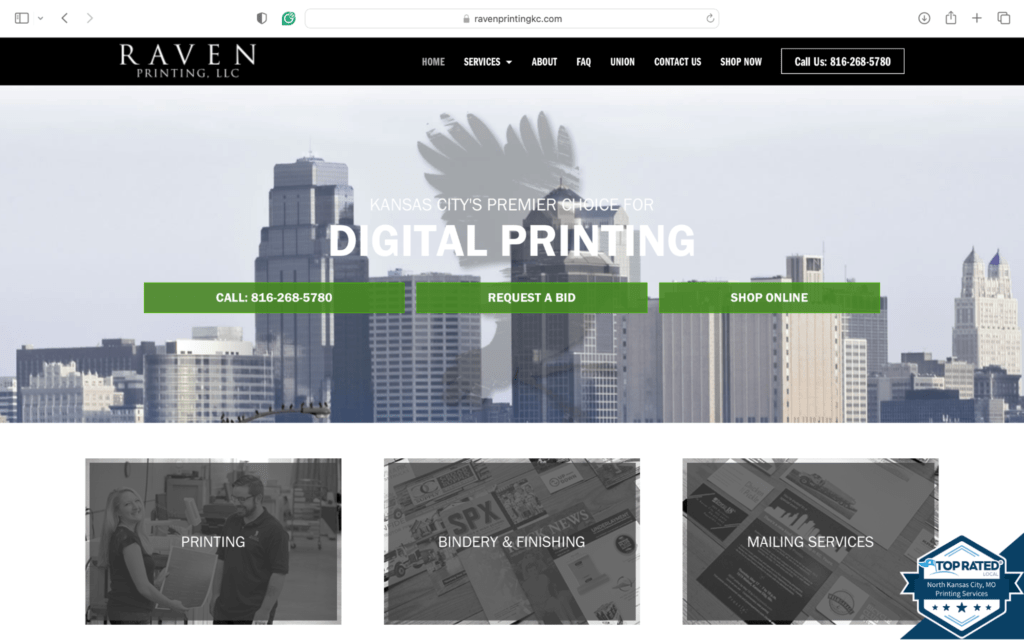
That’s one way to optimise your site’s pages for search. But you should also:
- Optimise your website for local search and create a Google My Business listing (if you have a brick-and-mortar location)
- Implement structure data schema markup to help search engines understand what your content is about
- Get high-authority sites to link to your site by posting shareable, high-quality content
- Improve website speed and performance for a great user experience (UX)/
- Build internal links and optimise site structure for easy navigation.
6. Make it Accessible
Another important element of website design is accessibility. That means people with impairments or disabilities can easily consume and engage with your content.
Whether it’s an auto subtitle generator that can quickly transcribe the spoken content in your videos or resizable text that allows users to enlarge text without breaking the layout, there are many ways to make your content accessible to everyone.
Here are a few simple tips:
- Make navigation with a keyboard as simple as possible
- Provide transcripts and captions for all multimedia
- Add descriptive alt text for images
- Choose readable fonts and colors
- Create accessible forms
7. Maintain and Update Regularly
After launching your site, you might think that all you have to do now is direct traffic to it. But your work isn’t done.
If you want to stay relevant in your industry and maintain your site’s authority and rankings, regularly update your site with fresh content, product updates, or promotions.
You’ll also want to keep the CMS software you’re using up-to-date. WordPress and certain website builders offer security patches to protect sites from hackers.
Here are some other tips for maintaining your website:
- Consider budgeting for a facelift every three years.
- Update copyright, legal terms and conditions.
- Refresh old, outdated, or inaccurate content.
- Set up automated backups.
- Fix broken links.
Final Thoughts
When potential customers land on your website, they should know exactly what your business is about, what products you offer, and what to expect when they make a purchase.
That’s what a high-quality business website does in a nutshell. Follow our roadmap to ensure you reach your destination with a strong online presence.
Author bio
Guillaume is a digital marketer focused on handling the outreach strategy at uSERP and content management at Wordable. Outside of work, he enjoys his expat life in sunny Mexico, reading books, wandering around, and catching the latest shows on TV.





